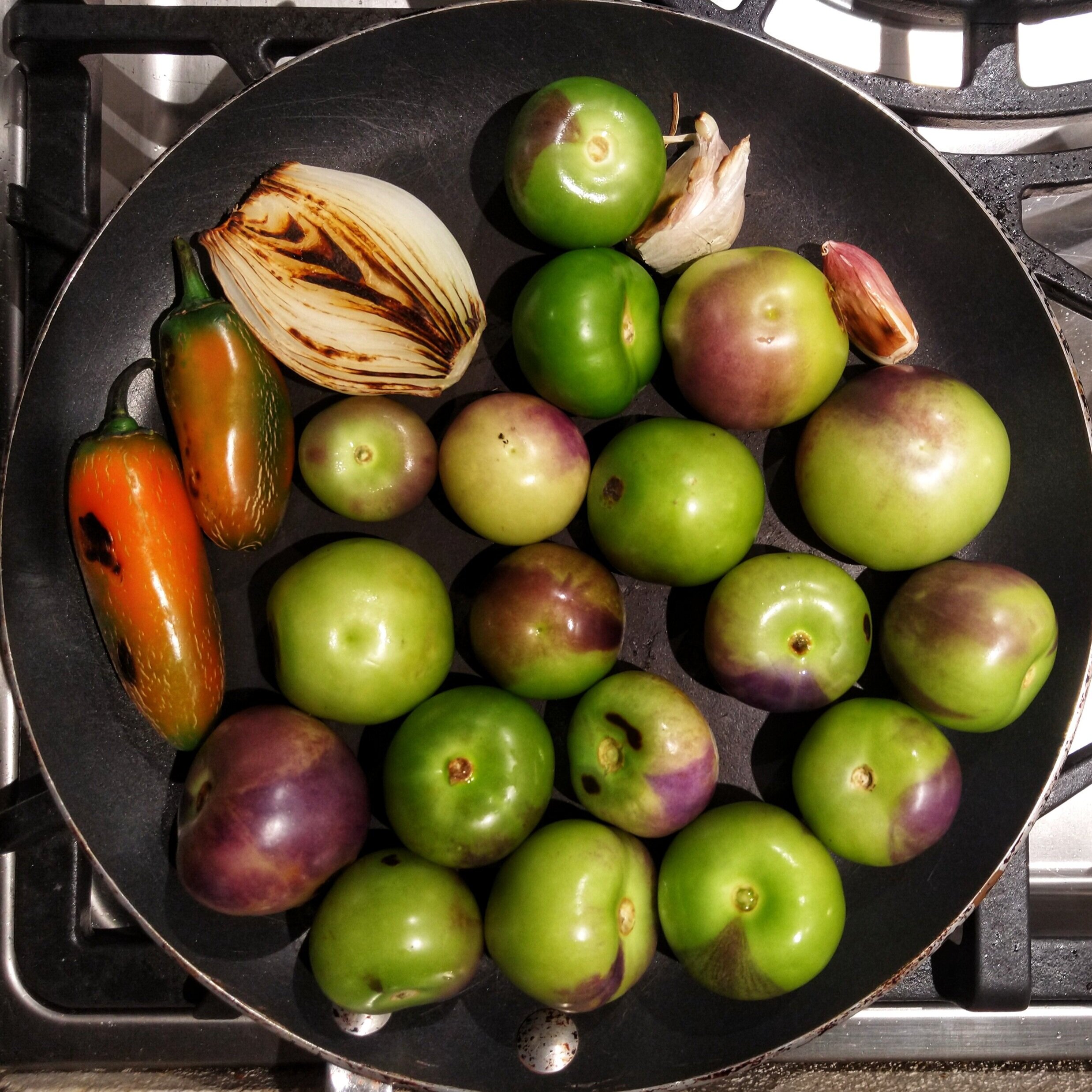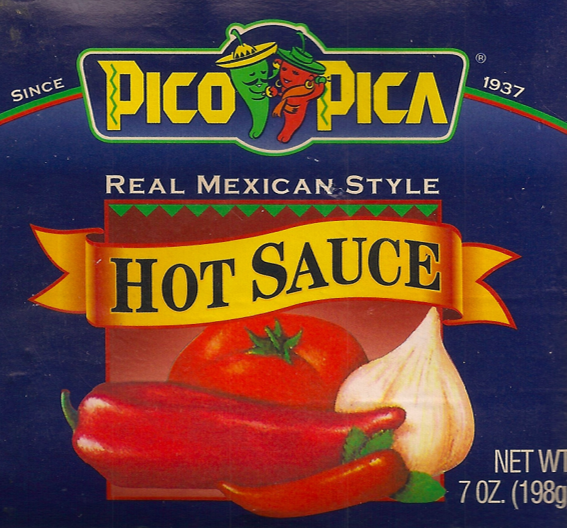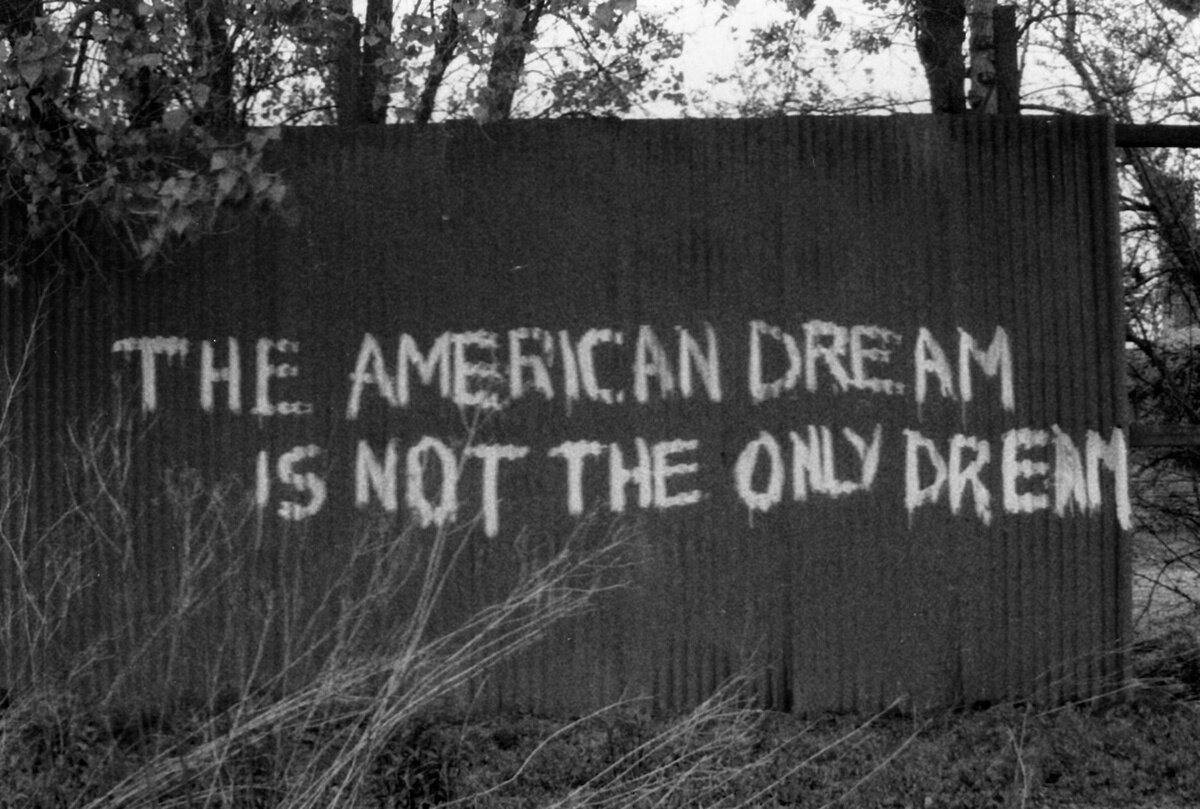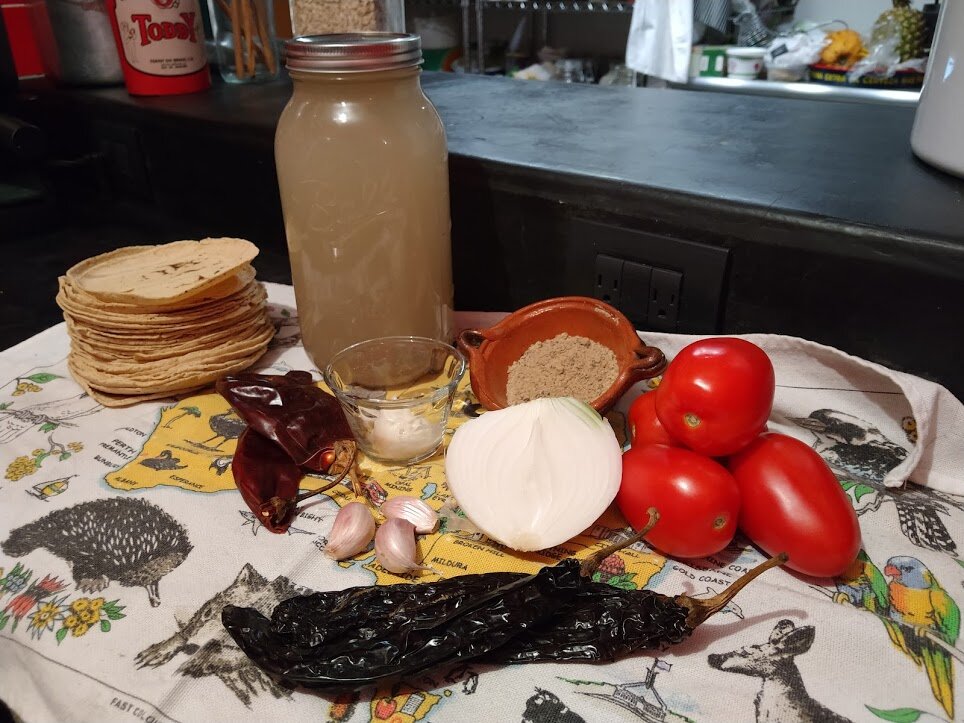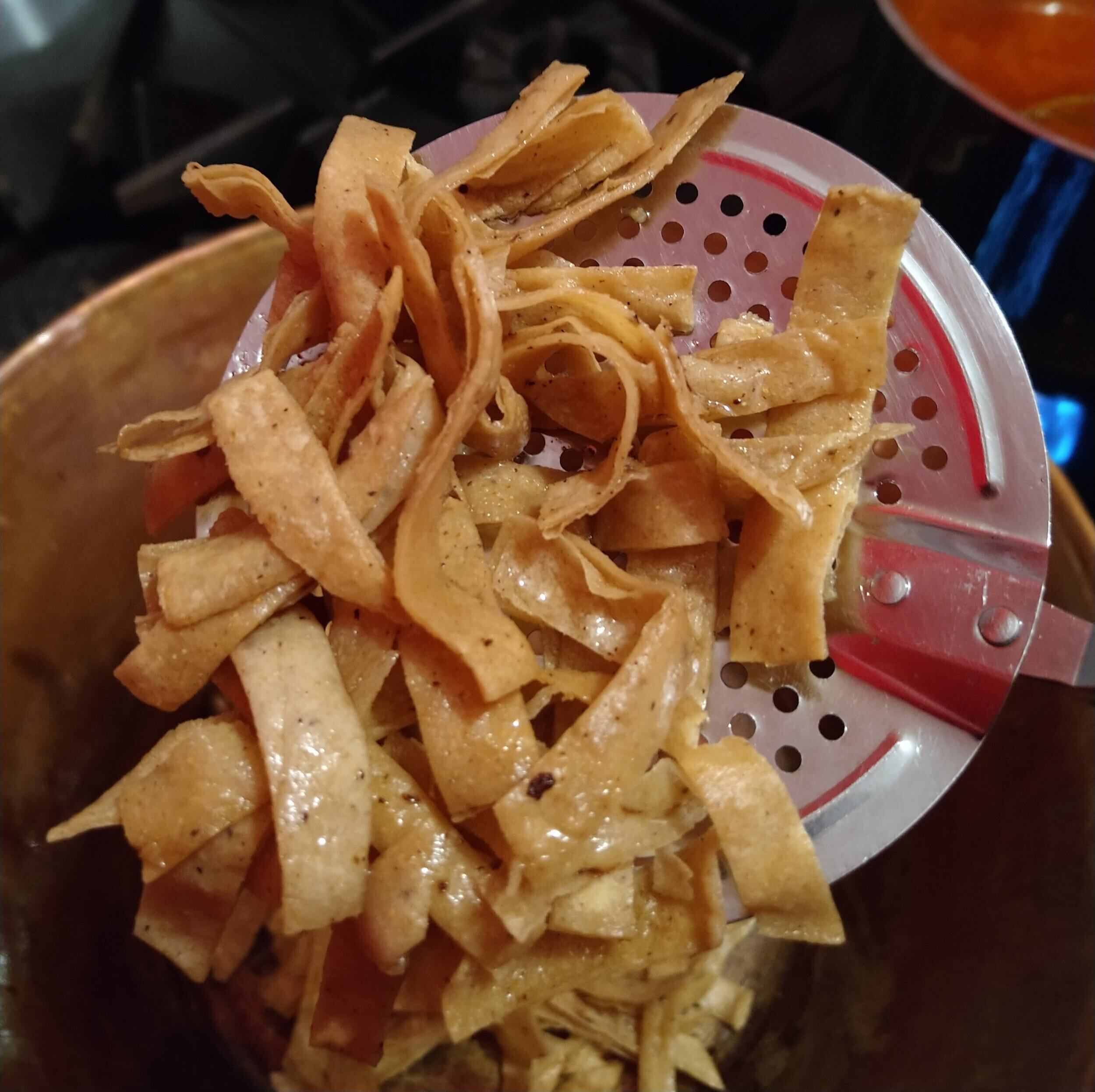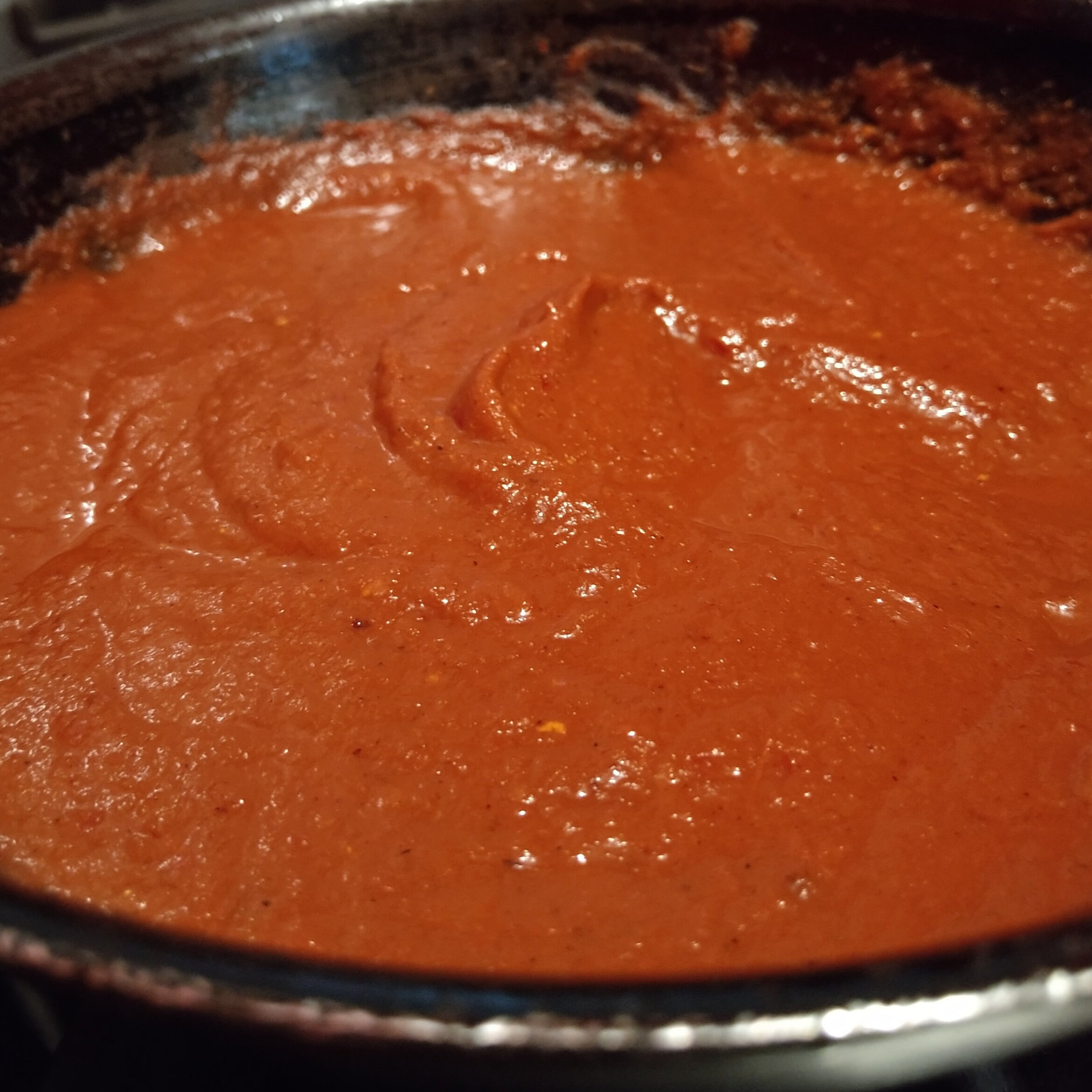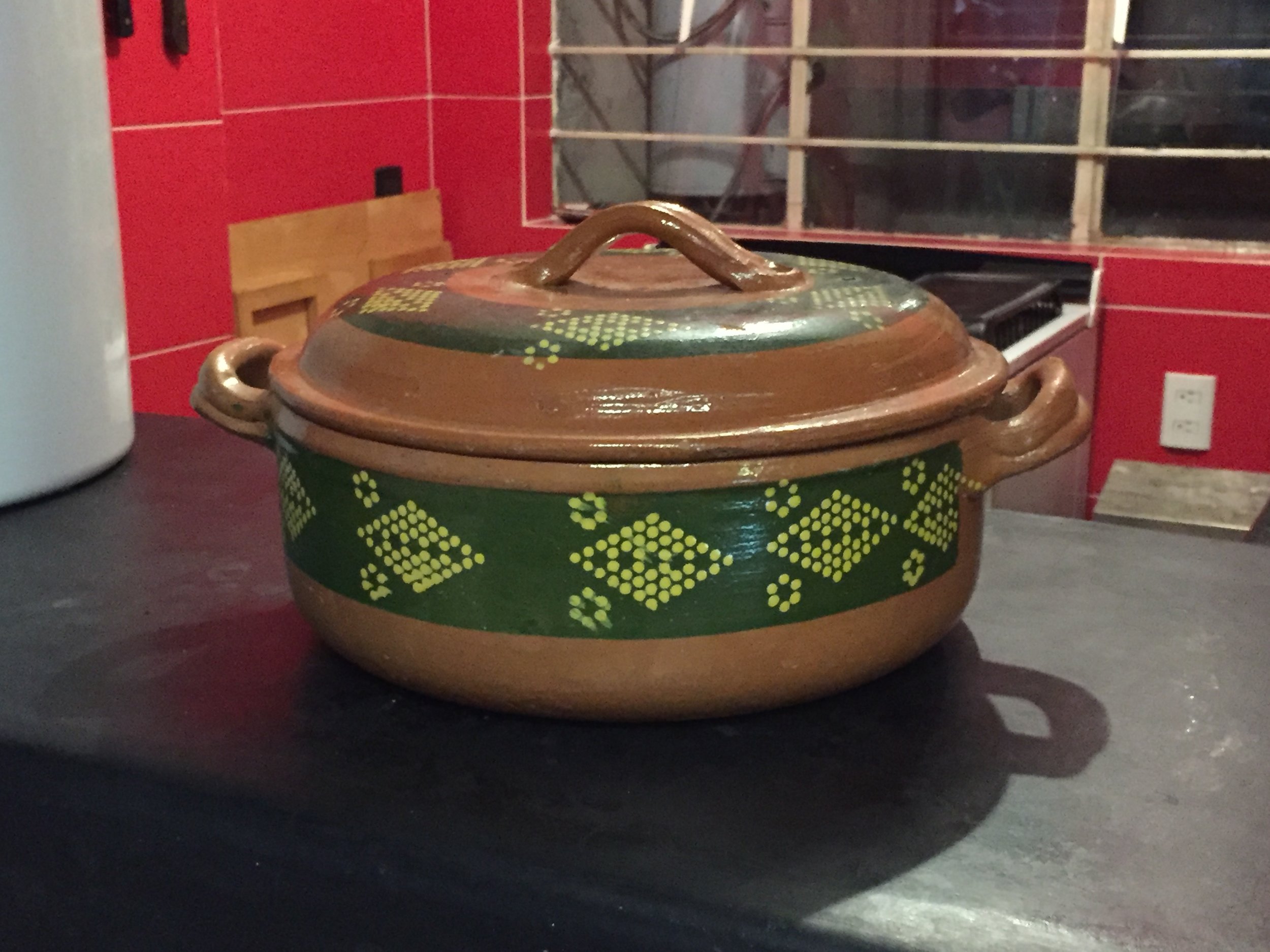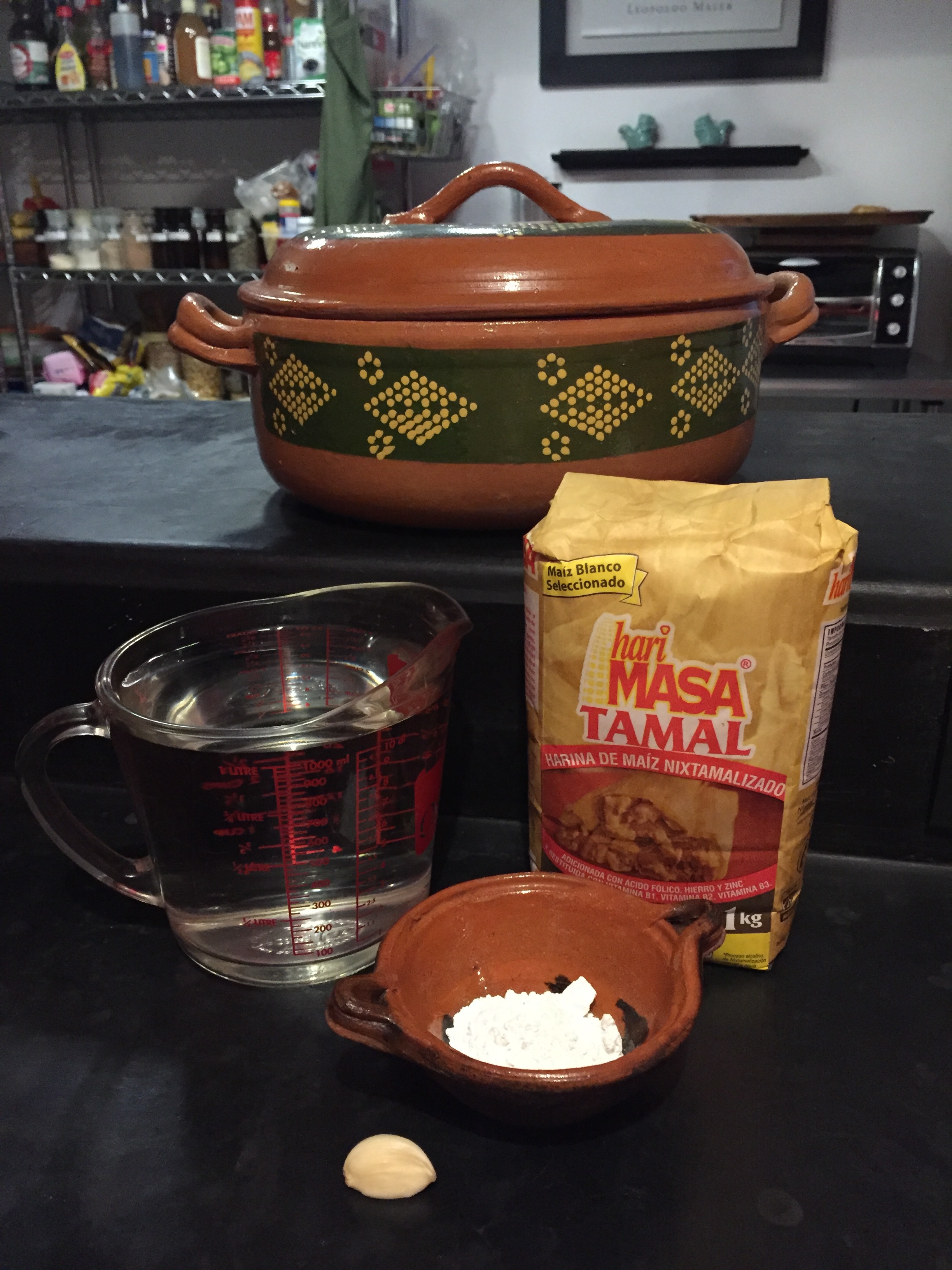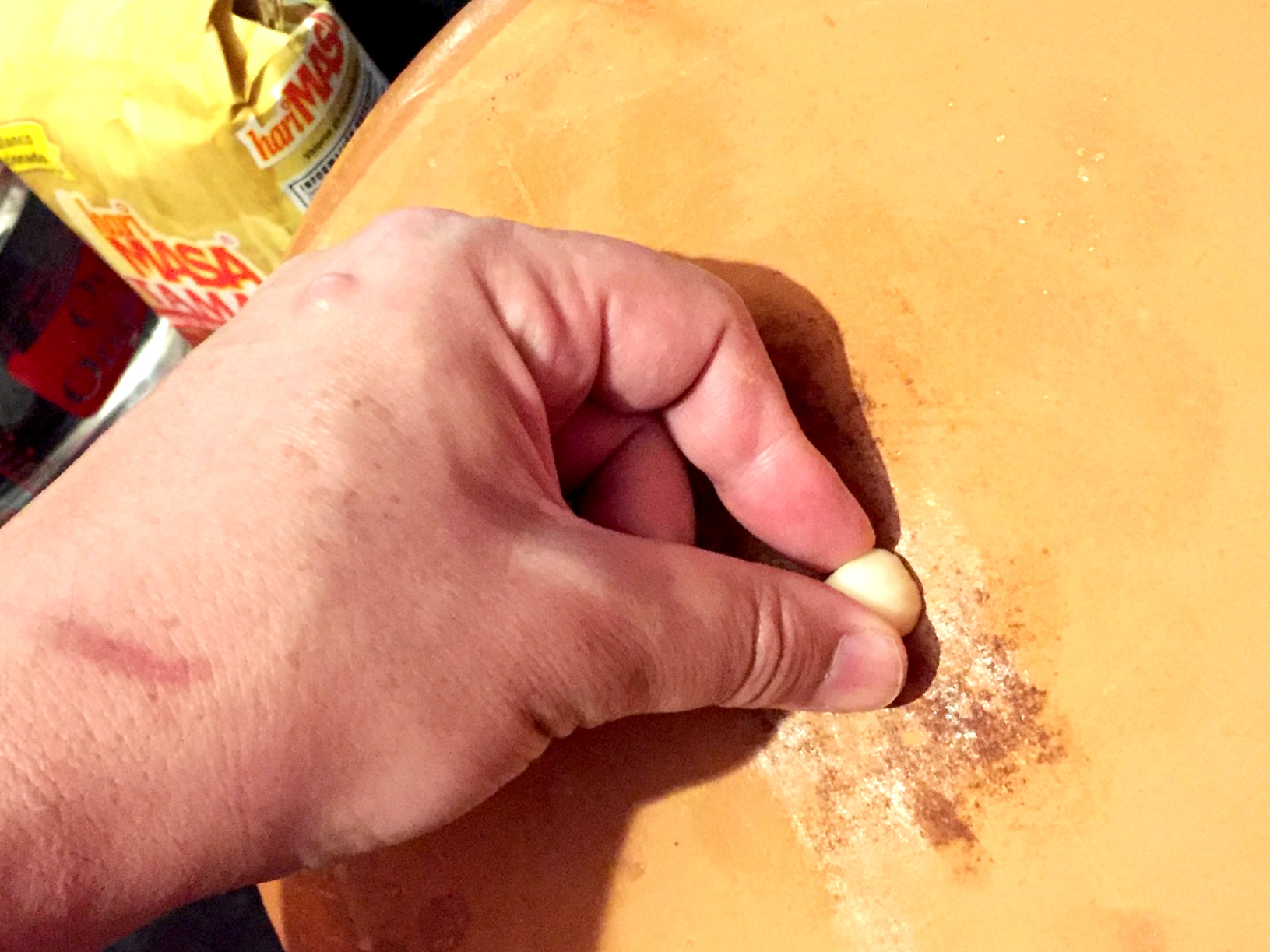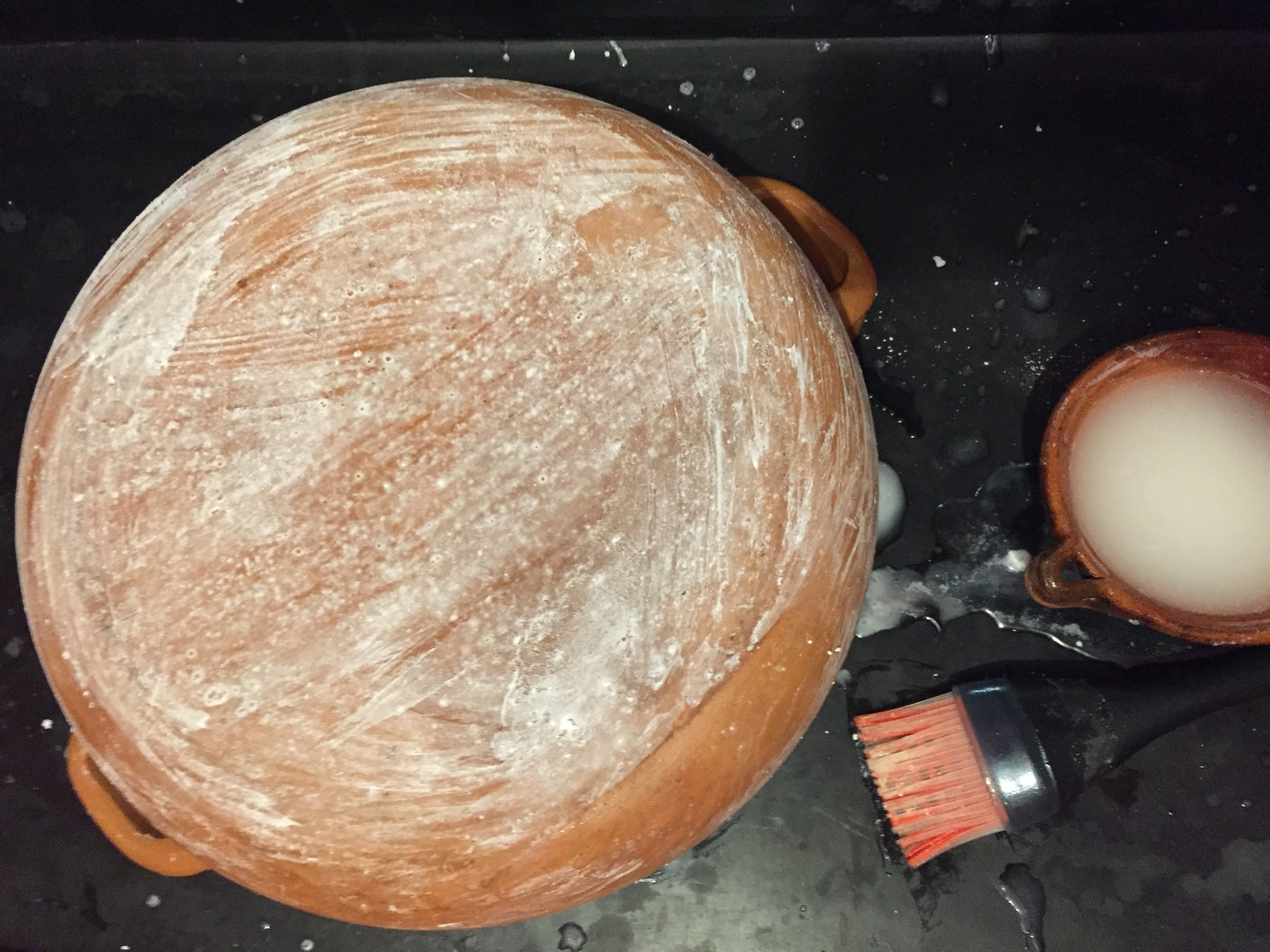The secret to delicious salsa is a verb
Salsa—it’s the essential component of any Mexican meal.
Although the literal English translation of the word salsa is simply “sauce,” in Mexico, salsa is generally understood to refer to a sauce seasoned with aromatics and chile. While the most common Mexican table salsas are vegetable based (think tomatoes and tomatillos), they can incorporate any and all ingredients—from fruits and nuts to cheese and insects. Some versions include only raw ingredients while other recipes feature ingredients that have been boiled, fried or roasted. The only limiting factor is, predictably, the imagination of the cook.
Growing up in California in the 1970s and 80s, my family rarely ate Mexican salsas at home that were made from scratch. Instead, we usually relied on a bottle of Pico Pica hot sauce tucked into the refrigerator door. Produced by Los Angeles-based Juanita’s Foods, this mild salsa has a pronounced tang of vinegar and notes of cumin. While its flavor isn’t what I’d describe as complex, it remains one of my favorites given its central place in my family food history. In fact, whenever I return to California for a visit, I always buy a couple of bottles to bring back to Mexico—which I’m well aware is like bringing sand to the beach.
When I left the US to move to the north of Mexico, I couldn’t wait to befriend Mexican folks who held the secret to making authentic salsa. What I hadn’t counted on is that everyone I met was too busy with work and family to bother making salsa at home. So I followed my friends’ lead and bought bottles of salsa roja and salsa verde made in the factories of Herdez and La Costeña.
With time, I eventually learned how to make a simple green salsa with tomatillos and jalapeños. It was tasty enough, but I remained a one-trick pony for many years.
My move to Mexico City was a game changer. My cooking style quickly began to evolve to reflect the diverse flavors of the historic capital. I began to incorporate ingredients I hadn’t used before, like dried chiles, xoconostle, huitlacoche, avocado leaves, insects and a rainbow of aromatic powders used to make mole and pipián. And my regular visits to the city’s taco and antojito stands exposed me to a previously unknown universe of salsas that were nothing like what I had grown up with in California.
Over the past decade, between eating out, attending cooking classes and experimenting at my home in Mexico City, I think it’s safe to say that I’ve learned a thing or two about salsa. It’s time to let you in on a little secret that’s not really a secret at all.
The secret, revealed
When making salsa, cooks in prehispanic Mesoamerica relied on a technique we now know as tatemar. This verb is a combination of two words with distinct etymological histories: tlatla and quemar, which are, respectively, the Náhuatl and Spanish terms for “to burn with fire.” It refers to the process of charring foods on a grill, comal or directly on hot coals to partially cook them and infuse them with a smoky aroma—a uniquely Mexican cooking technique not frequently seen in other parts of the world.
Today, while this cooking technique is most widely followed in rural communities of central Mexico, you’ll find folks charring foods all across the country. From the boozy barbecues known as carne asadas that happen every weekend in northern Mexico, to the fully decked out modern kitchens of affluent families in the country’s big cities, you’ll find Mexicans toasting and charring the foods that they eat.
There’s no “right way” to tatemar, so have no fear if you’ve never tried the technique. Just keep in mind that the longer you char your vegetables, the sweeter and smokier their flavors become as the natural sugars caramelize.
A brief word about the molcajete
Mexican salsas are traditionally prepared with a grinding stone called a molcajete. While many claim that the best-tasting salsas are prepared this way (and I would agree), I know that not everyone has a molcajete in their kitchen. This is why the recipes below call for the use of a blender.
Please don’t worry that your salsa isn’t truly authentic if you use a blender to prepare it rather than a molcajete. Let me share another secret with you: not every Mexican cook even has a molcajete. We do, however, all have at least one blender—and many cooks have two (one for making salsa and one for making mixed drinks).
Mild, medium or spicy?
No two chiles pack the same heat—even when the chiles are of the same size and variety. This is why determining how much chile to add to your salsa is more an art than a science. I always roast a few more chiles than I think I’ll need so that I can increase the heat incrementally until I reach the perfect level of picante.
Now, on to the recipes!
Simple salsa verde
You can make this traditional salsa in 15 minutes or less, so there’s no good reason not to give it a try. Not only is this full-bodied green salsa delicious atop tacos, quesadillas and other antojitos, you can also use it to stew chicken, beef or pork that can then be served with rice, beans and tortillas for a hearty plate of homestyle Mexican comfort food.
Ingredients
500g [1 lb]`tomatillos
1/4 medium onion
1 clove garlic, in its peel
2 jalapeño or serrano chiles (use more or fewer chiles according to your tolerance for heat—see below)
1-2 stalks of fresh cilantro
Salt and pepper to taste
Mild, medium or spicy?
As mentioned above, heat levels can vary greatly from chile to chile, and even two similar-sized chiles of the same variety can have notable differences in their levels of heat due to variables in the environmental conditions where they were grown. The Scoville scale was developed to help determine how spicy a chile is and can be used as a general guide to help you estimate the heat level of any given chile. Choose your chiles accordingly. Here is a comparison between the two chiles I normally use in this recipe:
Instructions
1. Char the vegetables.
a. Disinfect the tomatillos, chiles and cilantro. Here’s how.
b. Preheat your comal or skillet over high heat. You’ll know it’s ready when you flick water with your fingers and it immediately beads up.
c. On the hot comal or skillet, char the 500 g (1 lb) of tomatillos (leave them whole), the ¼ onion and the garlic in its peel (the peels are left on to help prevent burning while on the stove top; remove them before blending). Turn the vegetables frequently so that they char evenly on all sides. You’ll know the tomatillos are ready when they have charred spots on all sides and are beginning to soften. Set aside in a bowl.
2. Mix the charred vegetables in a blender.
Blend together the charred vegetables. If the mixture doesn’t blend easily you can add a small amount of water to get the blades going. Add the cilantro and continue to blend until you achieve the desired consistency of your salsa. While I generally prefer a chunky salsa, this salsa is also delicious if you let it blend for several minutes until it has a smooth glossy texture.
3. Season to perfection.
a. While blending your salsa, you’ll need to check two things: the level of heat and the amount of salt. As soon as you have blended the charred ingredients together, taste a small amount to check its level of spiciness. Add more chiles, blending after each addition, until the salsa reaches your optimal heat level.
b. Once you have adjusted the heat, season your salsa with salt and black pepper to taste. Keep in mind that spicy foods activate many of the same parts of the brain as salt, which can result in spicy foods tricking your brain into thinking that they taste saltier than they actually are. For this reason, you may want to err on the side of adding less salt to your salsa than would normally use to season other dishes.
4. You’re done!
Your salsa verde is now ready to eat. Serve it alongside a big bowl of tortilla chips or use it to add flavor to eggs, stews, tacos or anything else you can think of.
You can also transfer this salsa to a saucepan and add pre-cooked shredded chicken or chunks of uncooked beef or pork to make a hearty main dish.
Salsa with chile morita
Chile morita is first type of dried chile I learned to use in my salsas. (An ex from Veracruz introduced me to this delicious chile; at least I retained something positive from that doomed relationship.) Moritas are the dried form of a small varietal of jalapeño chile that grows in the southern half of Mexico. This salsa is particularly tart and smoky with a curious floral aroma imparted by these flavorful chiles.
The process described here is very similar to that used in the previous recipe. That’s the magic of salsa—once you learn the basic steps, you can personalize your salsa any which way you desire.
Ingredients
500g [1 lb]`tomatillos
1/4 medium onion
2 cloves garlic, in their peels
2 morita chiles (use more or fewer chiles according to your tolerance for heat—see below)
2 allspice berries, ground (about 1/8 teaspoon—a generous pinch—of ground allspice)
Salt and pepper to taste
Mild, medium or spicy?
Moritas are an unpredictable chile. While they reportedly fall between 15,000 and 30,000 SHU on the Scoville scale, I have been tested by their volatility. Sometimes, they have proven to be exceedingly mild while other times they’ve left me watery eyed and desperate for a glass of cold milk. For this reason, I recommend that you add the chiles one at a time as your blend your ingredients until you reach the level of heat that’s right for you.
Instructions
1. Toast the dried chiles.
a. Preheat your comal or skillet over high heat. You’ll know it’s ready when you flick water with your fingers and it immediately beads up.
b. Wipe the morita chiles clean with a dry cloth or paper towel and remove the stems.
c. Quickly toast the chiles on the hot comal or skillet. As soon as they begin to blister, flip them over—about 10-15 seconds on each side or else they will burn (which creates a bitter flavor). Remove from heat immediately and set aside.
2. Char the remaining vegetables.
a. Disinfect the tomatillos. Here’s how.
b. On the hot comal or skillet, char the 500 g (1 lb) of tomatillos (leave them whole), the 1/4 onion and the 2 cloves garlic in their peels (the peels are left on to help prevent burning while on the stove top; remove them before blending). Turn the vegetables frequently so that they char evenly on all sides. You’ll know the tomatillos are ready when they have charred spots on all sides and are beginning to soften. Set aside in a bowl.
3. Grind the allspice.
Use a small mortar and pestle or an electric spice grinder to transform the allspice berries into a powder. Freshly ground spices always add more flavor to your dishes than bottled spices sold in powdered form.
4. Mix the ingredients in a blender.
Blend together the toasted chiles, charred vegetables and the allspice. If the mixture doesn’t blend easily you can add a small amount of water to get the blades going. Continue to blend until you achieve the desired consistency of your salsa; there is no “correct” texture aside from the one you like best!
5. Season to perfection.
a. While blending your salsa, you’ll need to check two things: the level of heat and the amount of salt. As soon as you have blended the ingredients together, taste a small amount to check the level of spiciness. Add more chiles, blending after each addition, until the salsa reaches your optimal heat level.
b. Once you have adjusted the heat, season your salsa with salt and black pepper to taste. Keep in mind that spicy foods activate many of the same parts of the brain as salt, which can result in spicy foods tricking your brain into thinking that they taste saltier than they actually are. For this reason, you may want to err on the side of adding less salt to your salsa than would normally use to season other dishes.
4. You’re done!
Use your salsa to complement anything on your plate. Its smoky taste goes particularly well with grilled meats and vegetables.

